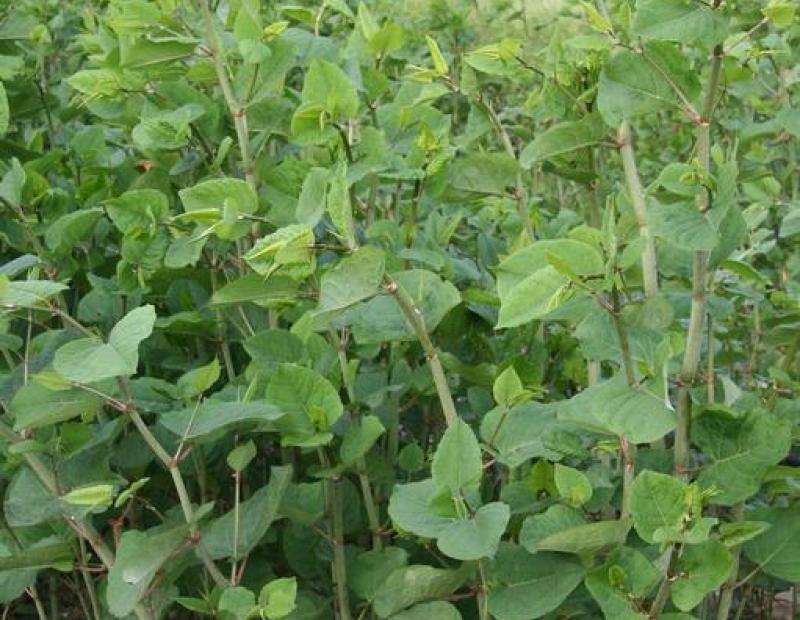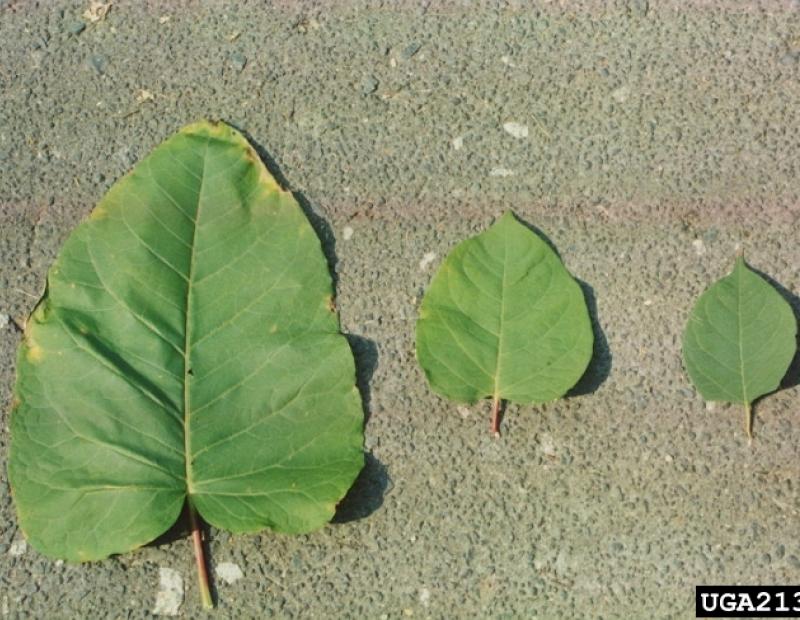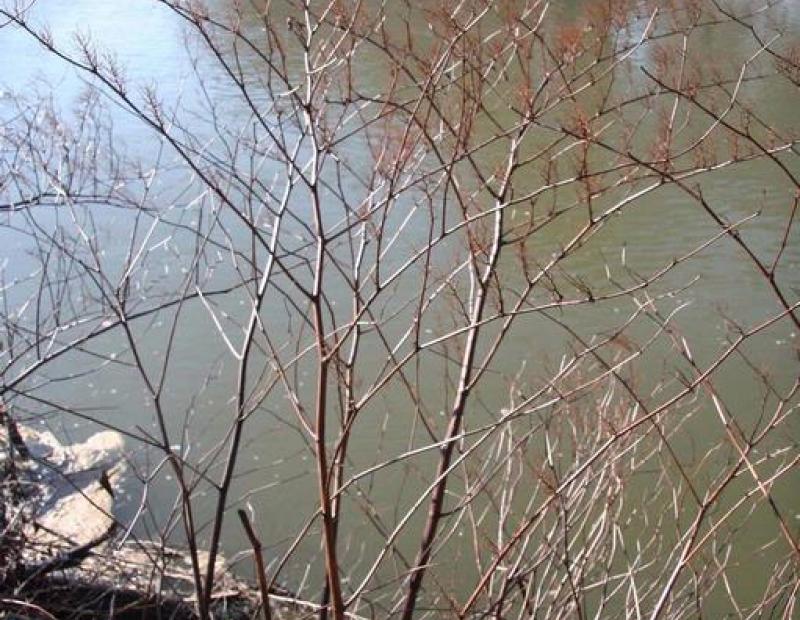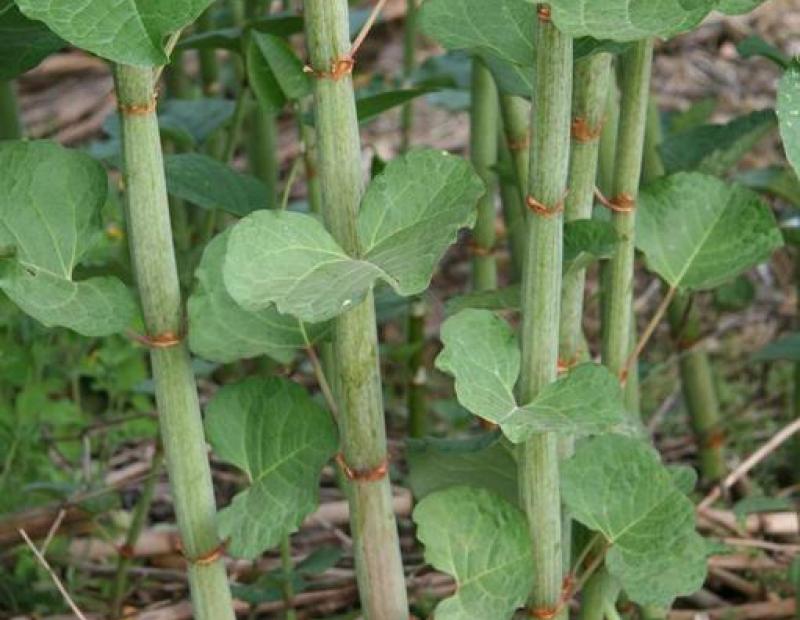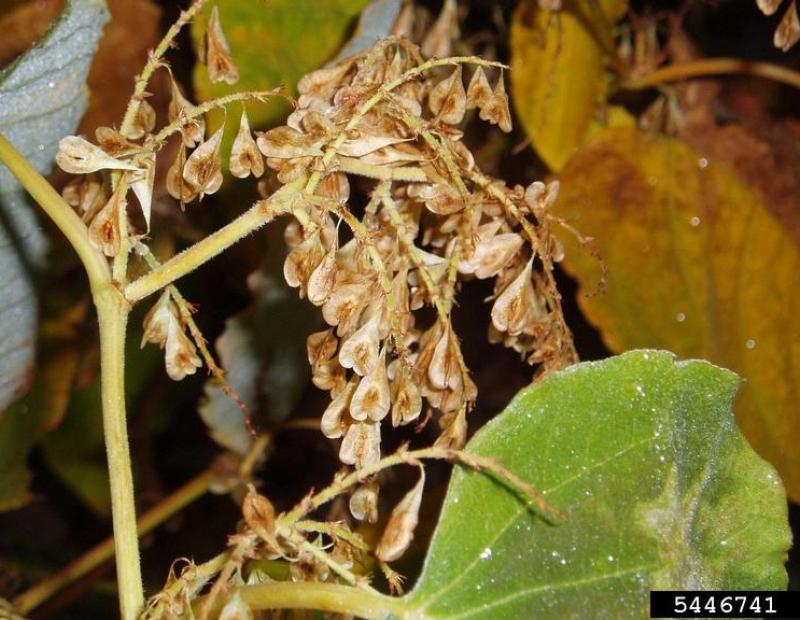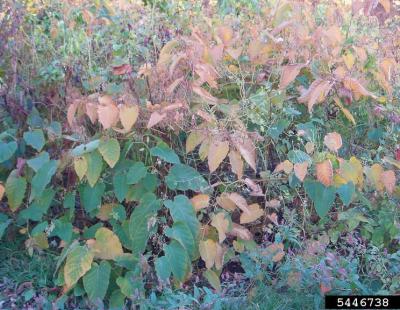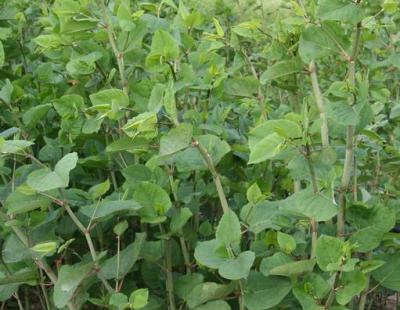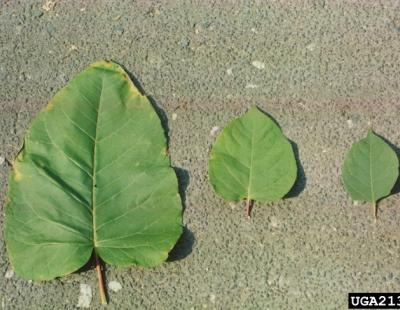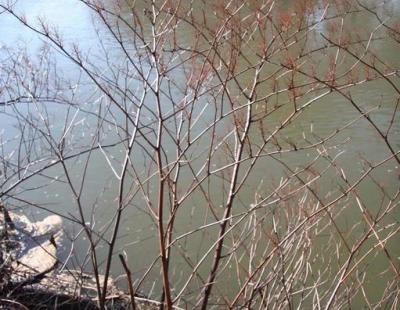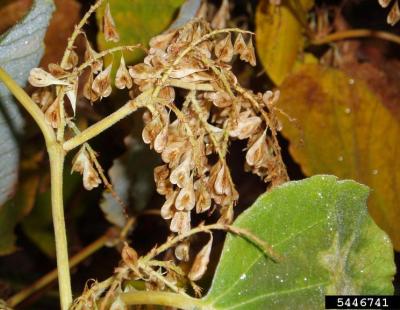- Terrestrial Plants
- Other Herbaceous
Bohemian knotweed forms in dense thickets that displace native plants and reduce biodiversity. They compete with native vegetation for space light, nutrients and water. Secondary losses of native species are often caused when they succumb to the herbicides that are sprayed on the knotweed for eradication purposes. Large colonies rabidly change structure and species composition of local ecosystems, in turn affecting many other plant and animal species. These plants also contain allelopathic compounds that are toxic to surrounding vegetation. This hybrid is considered to be more vigorous than either of it parents, as it spreads quicker and may be harder to eradicate. Bohemian knotweed may leave unkept growths of dead stems that trap debris andmay become litter dumps. They can also cause difficulties of access on river banks and floodplains. Once these plants die, in the winter, they leave the soil prone to flood erosion , which requires costly removal and bank reinforcement.
Bohemian knotweed is a hybrid between giant and Japanese knotweed, sharing characteristics with both parent species. It was originally introduced into the United States as an ornamental, but has spread widely across the nation since first introduction. Seeding hybrids with either parent species may cause this plant for further spread more rapidly in the future. It is most frequently found in areas with one or both parent.
This plant is a perennial herb that can grow from 6-12 feet tall, shorter in dry areas. The stems of the plant are typically erect, clustered, and glabrous.The stems are reddish-brown and usually branched. The dead canes often persist through winter. The leaves have a truncate to cordate base, and are ovate with acute tips. They have entire margins along the leaves. The leaves tend to be larger than Japanese knotweed, but smaller than Giant knotweed. Flowers are from green to white, to pink, between .16-.25 inches with tepals that obovate to elliptic, and apex is obtuse to acute. These flowers bloom between July and October. Most plants are males and lack seeds.
These plants tend to prefer distubed locations such as fields, pastures, and are often seen along roadwides and railways. They prefer moist, damp soil with abundant sunlight, but will tolerate most environmental conditions. Bohemian knotweed is widespread throughout the Lower Hudson Region and is a New York prohibited plant, and may not be sold, imported, purchased, transported, introduced or propogated throughout the state.


